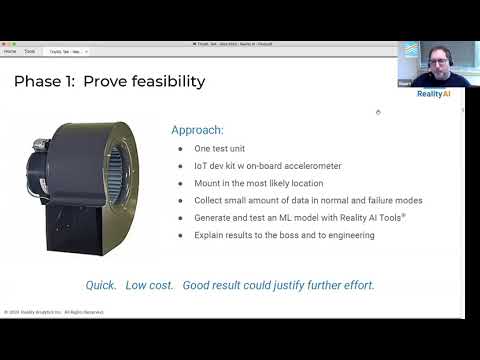Description:
Explore the intricacies of building products using Edge AI and TinyML on microcontrollers in this 33-minute tinyML Talks webcast featuring Stuart Feffer from Reality AI. Discover how to leverage AI for sensor selection, placement optimization, and component specification determination while minimizing data collection costs. Learn to generate sophisticated, explainable machine learning models based on sensor data automatically using Reality AI Tools 4.0. Gain insights into the differences between project execution and product development through real-world case studies, including condition monitoring for an industrial blower. Delve into topics such as AI Explore results, feasibility proof, BOM optimization, production ML model building, and data readiness considerations throughout the product development lifecycle.

Building Products Using Edge AI - TinyML on MCUs
Add to list